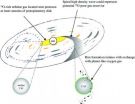(Press-News.org) Researchers have synthesized the vast literature on cancer to produce a next-generation view of the features that are shared amongst all cancer cells. These hallmarks of the disease provide a comprehensive and cohesive foundation for the field that will influence biomedical researchers in their quest for new cancer treatments.
The review article by Douglas Hanahan of École Polytechnique Fédérale in Switzerland and Robert Weinberg of the Whitehead Institute for Biomedical Research appears in the March 4th issue of Cell, a Cell Press publication. The new article updates and expands on the authors' classic review, "Hallmarks of Cancer," the most cited Cell article of all time.
"To our knowledge there has been no such synthesis for another disease," Hanahan said. "What was special for cancer was the explosion of knowledge, daunting in its scope and detail, but sufficient in terms of mechanistic pieces of a puzzle, to allow such a formulation."
"Cancer is special because it is, conservatively, more than 100 distinct diseases," Weinberg added. "The question is whether one can find commonalities shared by this motley crew."
The approach, as Hanahan and Weinberg explain it, was to stand back and attempt to produce some overarching conceptual scaffold, imposing some order on the vast and seeming unmanageable flood of observations and conceptual models that had poured out of the cancer field since the discovery of the first oncogene in the 1970s. The original "hallmarks" or functional abilities that characterize cancer include: 1) self-sufficiency in growth signals, 2) insensitivity to anti-growth signals, 3) tissue invasion and metastasis, 4) limitless replicative potential, 5) sustained blood vessel growth (angiogenesis), and 6) resistance to cell death.
As the new work details, much has been revealed in the last decade about the molecular and genetic underpinnings of these six original hallmarks. The authors also introduce two enabling hallmarks -- genomic instability and inflammation – and two emerging hallmarks – evasion of the immune system and reprogrammed energy metabolism.
Enabling characteristics set the stage for cancer, Hanahan explained. Genomic instability results in rare mutations that contribute to the regulation or functional mechanics of cancer's acquired capabilities. Inflammation of tumors mistaken for wounds by the immune system brings in wound-healing cells that inadvertently encourage proliferation, angiogenesis, and invasion.
Emerging hallmarks, on the other hand, are features that are beginning to appear as though they may be core features in nearly all cancers based on recent evidence. "While not yet clearly documented to be widespread or ubiquitous in cancers, they may well become so over the coming years," Weinberg said.
Understanding these principles has implications for cancer treatment.
"Drugs targeting each discrete hallmark or enabling characteristic are either clinically approved or are in clinical development, but virtually all show limited benefit due to the development of resistance," Hanahan said. "We pose the reasonable - but far from certain - hypothesis, that by co-targeting multiple hallmarks, drug resistance may be more difficult for a cancer to achieve, thereby producing more enduring clinical benefits for cancer patients."
Ultimately, though, it all comes down to one simple notion: "As before, we believe that there is much to be gained from stepping back and understanding the basic principles of cancer biology rather than burrowing deeply into its myriad details," Weinberg said.
###
Universal access of the Hallmarks of Cancer review article is brought to you by PerkinElmer.
Authors:
Douglas Hanahan, The Swiss Institute for Experimental Cancer Research (ISREC), Lausanne Switzerland & UCSF, San Francisco, CA
Robert A. Weinberg
Whitehead Institute for Biomedical Research, Cambridge, MA
In search of cancer's common ground: A next-generation view
2011-03-04
ELSE PRESS RELEASES FROM THIS DATE:
Kidney transplant recipients: Get moving to save your life
2011-03-04
Low physical activity increases kidney transplant patients' likelihood of dying early, according to a study appearing in an upcoming issue of the Clinical Journal of the American Society Nephrology (CJASN). The results suggest that patients need to exercise to fend off an early death.
Inactive people in general face increased risks of developing cardiovascular disease and of dying prematurely. Individuals with chronic kidney disease—particularly those on dialysis—tend to get little exercise, but most increase their activity levels modestly after receiving a kidney transplant. ...
California islands give up evidence of early seafaring
2011-03-04
Evidence for a diversified sea-based economy among North American inhabitants dating from 12,200 to 11,400 years ago is emerging from three sites on California's Channel Islands.
Reporting in the March 4 issue of Science, a 15-member team led by University of Oregon and Smithsonian Institution scholars describes the discovery of scores of stemmed projectile points and crescents dating to that time period. The artifacts are associated with the remains of shellfish, seals, geese, cormorants and fish.
Funded primarily by grants from the National Science Foundation, the ...
Fossils of horse teeth indicate 'you are what you eat,' according to NYCOM researchers
2011-03-04
Old Westbury, New York (Mar. 3, 2011) – Fossil records verify a long-standing theory that horses evolved through natural selection, according to groundbreaking research by two anatomy professors at New York College of Osteopathic Medicine (NYCOM) of New York Institute of Technology.
Working with colleagues from Massachusetts and Spain, Matthew Mihlbachler, Ph.D., and Nikos Solounias, Ph.D. arrived at the conclusion after examining the teeth of 6,500 fossil horses representing 222 different populations of more than 70 extinct horse species. The records, spanning the past ...
Optical tweezers software now available for the iPad
2011-03-04
Optics researchers from the Universities of Glasgow and Bristol have developed an iPad application for accurate, easy and intuitive use of optical tweezers.
Optical tweezers, used to manipulate tiny particles through the use of highly focused laser beams, are the tool at the heart of much molecular biology – helping us to experiment with and better understand the microscopic processes of organisms.
Research published today, Friday 4 March 2011, in IOP Publishing's Journal of Optics, shows how a team of researchers has overcome the limitations of computer mouse and ...
Johns Hopkins team explores PARIS; finds a key to Parkinson's
2011-03-04
Johns Hopkins scientists have discovered that PARIS — the protein — facilitates the most common form of Parkinson's disease (PD), which affects about 1 million older Americans. The findings of their study, published March 4 in Cell, could lead to important new targets for treatment.
Previous research has shown that a protein dubbed parkin protects brain cells by "tagging" certain toxic elements for natural destruction. Mutations in the parkin gene cause rare forms of PD that run in families, but its role remained unclear in sporadic late-onset PD, the prevalence of which ...
Star-shaped brain cells feed long-term memory
2011-03-04
Star-shaped cells in our brains called astrocytes were once considered little more than structures to fill the gaps between all-important neurons. But more recent evidence has emerged to reveal that those astrocytes play more than a supporting role; they are involved in information processing and signal transmission and they help to regulate the shapes of our neurons and their connections to one another.
Now, researchers reporting in the March 4th Cell, a Cell Press publication, have found that astrocytes are also essential for making long-term memories. When they don't ...
Oxygen isotope analysis tells of the wandering life of a dust grain 4.5 billion years ago
2011-03-04
Scientists have performed a micro-probe analysis of the core and outer layers of a pea-sized piece of a meteorite some 4.57 billion years old to reconstruct the history of its formation, providing the first evidence that dust particles like this one experienced wildly varying environments during the planet-forming years of our solar system.
The researchers interpret these findings as evidence that dust grains traveled over large distances as the swirling protoplanetary nebula condensed into planets. The single dust grain they studied appears to have formed in the hot ...
Trouble with the latest dance move? GABA might be to blame
2011-03-04
If you tend to have trouble picking up the latest dance moves or learning to play a new piano piece, there might be an explanation. A new study published online on March 3rd in Current Biology, a Cell Press publication, shows that people who are fast to learn a simple sequence of finger motions are also those whose brains show large changes in a particular chemical messenger following electrical stimulation.
That chemical messenger, known as GABA, is important for the plasticity of the motor cortex, a brain region involved in planning, control, and execution of voluntary ...
Brain rhythm predicts real-time sleep stability, may lead to more precise sleep medications
2011-03-04
A new study finds that a brain rhythm considered the hallmark of wakefulness not only persists inconspicuously during sleep but also signifies an individual's vulnerability to disturbance by the outside world. In their report in the March 3 PLoS One, the team from the Massachusetts General Hospital (MGH) Division of Sleep Medicine uses computerized EEG signal processing to detect subtle fluctuations in the alpha rhythm during sleep and shows that greater alpha intensity is associated with increased sleep fragility. The findings could lead to more precise approaches to ...
As Natural Disasters Strike Worldwide, Poly Tarps Come to the Rescue
2011-03-04
There have been no shortages of horrific natural disasters splashing across headlines in the last year: the devastating earthquakes in Haiti and Chile; the Tsunami in the Philippines; and the volcano eruption in Indonesia--to name just a few. The poly tarps have come to the rescue over and over again in these situations, providing a cheap yet durable material with which to construct a roof or otherwise assist in the process of recovering and rebuilding from natural disaster born tragedy.
In the event of a natural disaster, as people are forced out of their homes or lose ...


